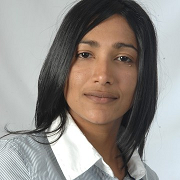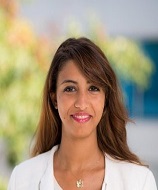Keynote Speakers
Abstract: The DMET (Distribution, Metabolism, Excretion and Toxicity) technology has steadily advanced leading to increased demands to develop new bioinformatics software, analysis tools, algorithms, web applications and specific statistical techniques. With the advent of personalized medicine, it is evident that a large number of pilot studies will be conducted globally in the foreseeable future. Findings between different studies can be compared effectively if data reporting standards are in place. Furthermore, if data are extracted in a concise and correct manner, they can be used in subsequent experiments. We feel that quality of data supersedes quantity and using a concise method of data extraction from DMET arrays can greatly increase the experimenter’s ability to sort biologically meaningful information from background noise and experimental error. Ultimately, the field of pharmacogenomics will evolve to integrate data from various omics and technology platforms. Implementing standards for submission of data for each of the various platforms (microarrays, SNP arrays, proteomics and DMET), will aid the development of pipelines able to consolidate the different platforms and the standards by which each abides. Minimum Information required for a DMET Experiment (MIDE) is proposed to provide pharmacogenomics reporting guidelines, the information and tools required for reporting to public omic databases. For effective DMET data interpretation, sharing, interoperability, reproducibility and reporting, we propose MIDE.
Christine Fernandez-Maloigne XLIM Laboratory – Joint Research Unit (JRU) 7252 of CNRS University of Poitiers -France
Study of psycho-visual aspects of stereoscopic vision in immersive conditions of vizualisation Abstract: The 3D videos are considered as the expected evolution of cinema and television, comparable to the introduction and spread of the color in the middle of the last century. The stereoscopic viewing, in addition to cultural and recreational domains, can also bring a definite plus in diagnostic help, medical or not, education and training, virtual prototyping, non-destructive quality control. The advanced computing in recent years now makes it possible to build and visualize complex 3D scenes in real time, on many stereo systems and this will revolutionize the uses. The major innovation in viewing "3D" stereoscopic digital comes from the contribution of depth perception generated by the operation of stereopsis phenomenon. This phenomenon corresponds to the perception of the relative depth to the screen of two stimuli presented in the visual field of the observer, on both visual axes; However, the stereopsis remains little studied as regards the contents "3D" visualized on technical means giving the illusion of the third dimension. The ongoing studies show that stereopsis induced visualization "3D" can cause some visual discomfort which is not quantified or modeled to date. As part of a study for an industrial partner, we compared a "classic" type of 3D projection system in cinema theater, big screen with active glasses, with an immersive stereoscopic projection system, interactive, multi-users, that allows computer simulations, as kind of virtual reality. This system consists of a 360 ° screen that completely surrounds the audience and allows broadcasting a universe made up of digital images calculated in real time, displayed via a stereoscopic projection and viewable by active glasses. It operates a spatial sound diffusion and an intuitive multi-user interactivity using capture gestures in space. We will present a subjective study to quantify the quality of rendering of the two systems in terms of sense of immersion and visual comfort.
CRIStAL UMR CNRS 8219 Télécom-Lille - France
Problems in Modeling by Riemannian Geometry Abstract: In computer vision, shapes have been represented in many different ways: point clouds, surfaces, images or skeleton are only some examples. The difficulty comes from nonlinearity of these shape spaces. Indeed, these shape spaces are not Euclidean and one cannot perform classical statistics. One way to overcome this difficulty is to introduce a Riemannian structure on the shapes space. This enables us to exploit the geometry of these shape spaces and to develop efficient statistical tools. In this talk, I will show some recent works from our group on Riemannian geometry and its application in a variety of problems including recognition of faces, expressions and actions.
Abstract: This talk presents recent developments in texture classification and visualization of biomedical images and signals, including physiological, microscope, MRI, and CT data. The technical methods involve chaos, nonlinear dynamics, geostatistics, fuzzy logic, and deep learning. Current benchmark results and selected challenging problems of future research in big data in personalized medicine are also addressed with suggested directions.
Keynote Speaker 5
Ikram El khadji SAP Software Company Morocco
Data Analysis and Research Insight Abstract: The field of Bioinformatics can be simplified “as the scientific field that deals with data and knowledge: the storage, retrieval, and optimal use for problem-solving and decision making within the field of biological data analysis. The field of bioinformatics has seen a tremendous increase in emerging research, leading to new challenges in managing and analyzing all this new data. When we observe the results of the computing revolution in the field of bioinformatics we can appreciate the fact that many of critical deductions regarding our understanding of health and the causing agents, have come to the front. The challenges in the field are predominantly the vast array of data, evolving knowledge that is the result of study of the genome and its manifestation. This presentation will provide some insights for analytics in support of research and the methods to gain cross-functional visibility and collective insights into quality of data driven research. Interactively and collaboratively analyzing large volumes of bioinformatics research data from diverse sources to advance opportunities for personalizing medical solutions. During the talk, latest technology trends in analysis will be shared, in support of the researchers needing the ability to transform a large volume of data from diverse sources into actionable insights. Various case studies will be shared during the presentation to showcase cutting edge developments. .
|







